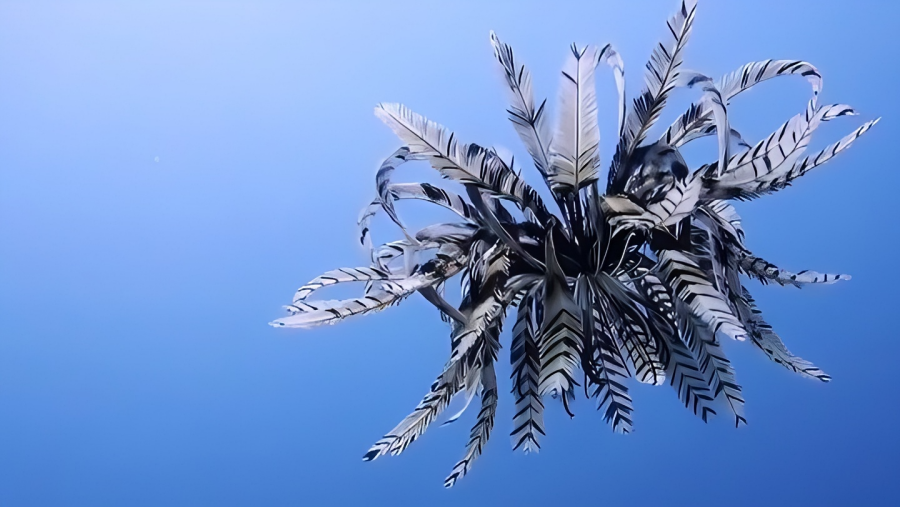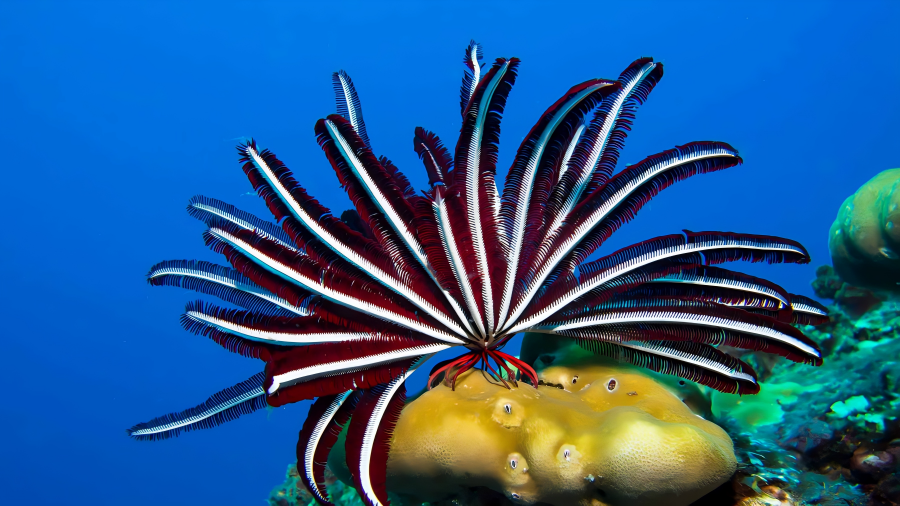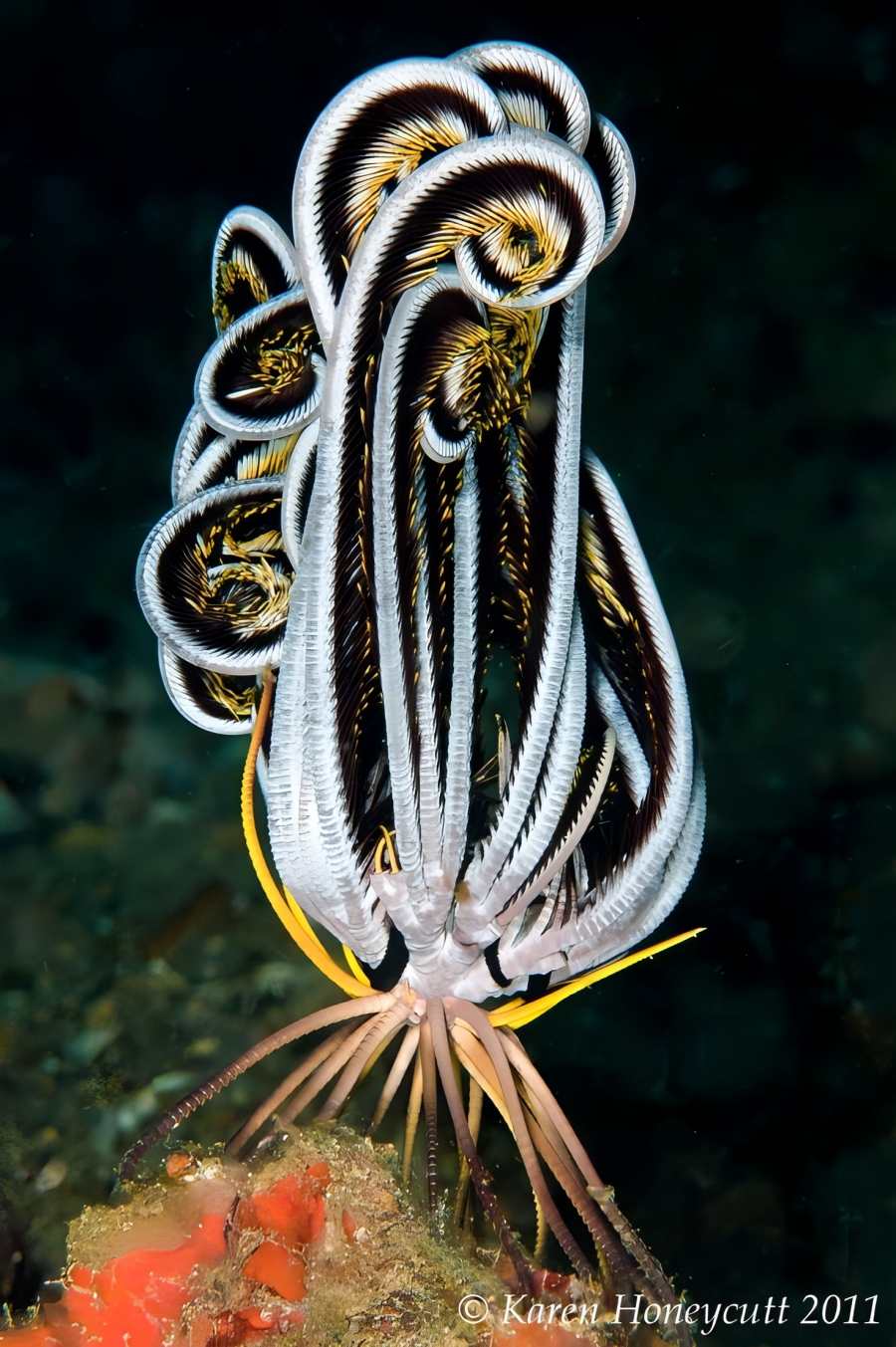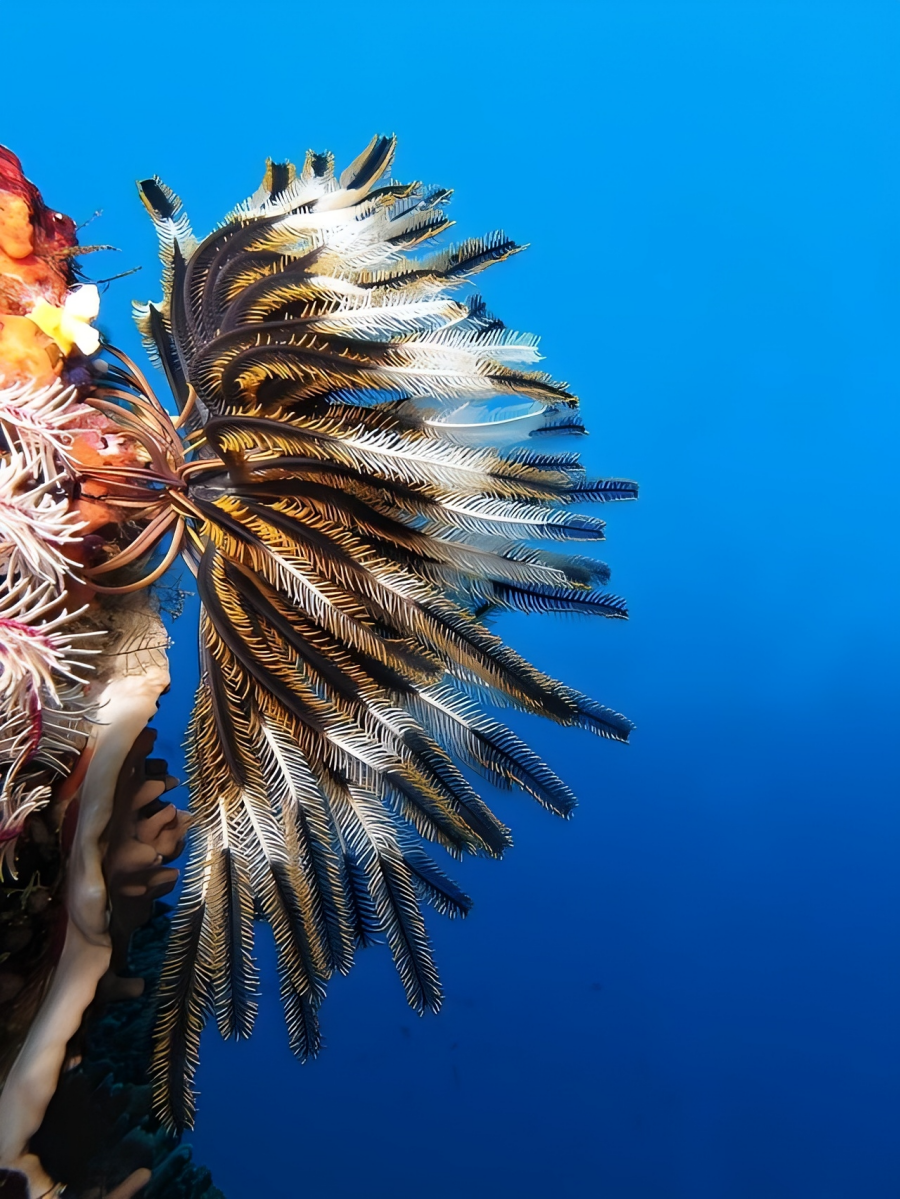

Hii... friends🤩, this is my next blog✌️.Hope you all do well 😄.In this blog we know about Feather Star.

One of the earliest Echinoderm species and a member of the class Crinoidea is the featherstar fish. It is not a plant, but a crinoid, a marine invertebrate.
Despite looking similar to brittle stars, feather stars belong to a different Class Crinoidea.
Crinoidea means "lily-like" in Greek. There are about 600 identified species of feather stars that are still living. Shallow-water crinoid species are also known as comatulids.
Crinoidea is a class of marine organisms that includes crinoids. Although the largest crinoid group, Comatulida, includes the unstalked forms of crinoids, sometimes known as feather stars or comatulids, they are more commonly referred to as sea lilies in their juvenile stage when they are attached to the sea floor by a stalk.

The marine creature, which was filmed in Thailand, is referred to as a living fossil. These aquatic animals are fascinating proof that beauty gets better with age. Marine invertebrates known as feather stars have arms that resemble feathers and radiate from a central body.
Feather-like limbs radiate from a central body on marine invertebrates known as feather stars.

The majority of feather stars have at least 10 arms, and most have arms in multiples of 5. 80 to 200 arms are common in some persons. The arms are made up of large, well-formed, jointed ossicles (plates largely made of calcium carbonate).
Usually, one of the swimming arms with feathery fringes serves as the fifth arm. Feather stars use their gripping "legs" (called as cirri) to attach to sponges, corals, or other substrates in order to feed on drifting microbes by trapping them there.

As with starfish and sea urchins, feather stars, which are commonly mistaken for coral, are echinoderms. They come in a wide range of hues and dimensions, including black, brilliant yellow, and brilliant orange.
In actuality, neither blood nor a brain can be found in starfish. Actually, they use pure sea water to circulate nutrients through their nervous system.

Fish are their main predators, but cunning feather stars trick them by signaling that they are poisonous despite the fact that they are not by using a vibrant range of hues like red, bright yellow, and green.
These critters frequently coexist in harmony with other tiny aquatic organisms like sea anemones or clownfish.

Oceans all across the world are home to these kinds of marine life. They will, however, probably be observed in the waters of the Indo-West Pacific area.
While it is possible to search for feather stars throughout the day, the best viewing is at night when they migrate to shallower waters to feed.
Hope you gain some knowledge about Feather Star🤩✌️.
Thank you..,




